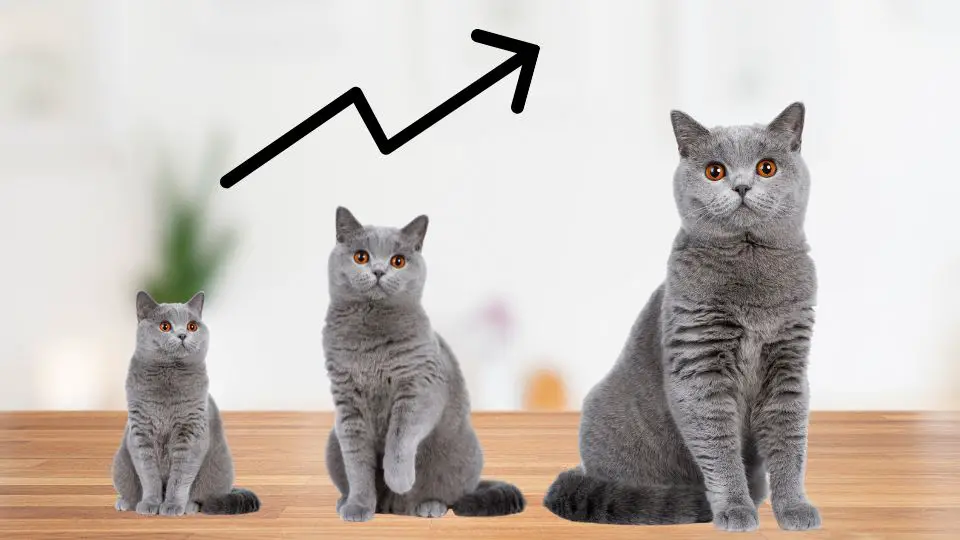Feeding a British Shorthair kitten properly is essential to ensuring their health and well-being. From determining the right feeding frequency and portion sizes to transitioning to adult food, there are several important factors to consider.
In this article, we will provide tips and guidelines for feeding your British Shorthair kitten.
How to feed british shorthair kitten
Feeding a British Shorthair kitten is an important part of their overall care and development. Here are some tips on how to properly feed your kitten:
- Determine feeding frequency and portion sizes: The age, weight, and activity level of your kitten can help determine how often and how much to feed them. Younger kittens need to be fed more frequently than older ones, and active kittens may require larger portions. Monitor your kitten’s weight regularly and adjust their feeding schedule and portions as needed.
- Establish a feeding schedule: Consistency is key when it comes to feeding your kitten. Stick to a regular routine and determine the best feeding times for your kitten. For example, you may feed them first thing in the morning, midday, and in the evening.
- Provide fresh water at all times: Access to clean, fresh water is essential for your kitten’s health. Use a clean water bowl and change the water frequently to ensure it stays fresh.
- Use high-quality kitten food: Choose a high-quality kitten food that meets your kitten’s nutritional needs. Look for a food that contains protein, fat, and essential nutrients.
- Gradually transition to adult food: When your kitten reaches around 12 months of age, it’s time to gradually transition them to adult food. Start by introducing the new food slowly, mixing it with their current kitten food. Over the course of a week or two, gradually increase the amount of adult food and decrease the amount of kitten food until your kitten is fully transitioned.
Determine feeding frequency and portion sizes
When it comes to feeding your British Shorthair kitten, determining the appropriate feeding frequency and portion sizes is crucial for their growth and development. Here are some factors to consider:
Age of kitten
The age of the kitten is significant. Kittens under six months old require three to four small meals a day, while older kittens can eat two larger meals a day. As your kitten grows, their dietary needs change, and so should their feeding schedule.
Weight of kitten
The weight of your kitten is an important consideration. Underweight kittens require more frequent and larger feedings, while overweight kittens require reduced portion sizes and feeding frequency. Monitoring your kitten’s weight is crucial in determining the appropriate feeding schedule.
Activity level of kitten
The activity level of your kitten can also impact their feeding frequency and portion sizes. Kittens who are more active and playful burn more calories and may need to be fed more frequently or in larger portions. On the other hand, kittens who are more sedentary may not need to eat as often. Observe your kitten’s behavior and adjust their feeding schedule accordingly.
Establish a feeding schedule
Consistency is key when it comes to feeding your kitten. Try to feed your kitten at the same time(s) every day, as this will help establish a routine and make it easier for your kitten to know when to expect food. Consistency can also help prevent overfeeding or underfeeding.
The best feeding times for your kitten will depend on their age, weight, and activity level. Generally, it’s recommended to feed kittens three to four small meals a day until they reach six months of age, at which point you can switch to two to three meals per day. Make sure to space out meals evenly throughout the day, and avoid feeding your kitten right before bedtime, as this can disrupt their sleep.
Pay attention to your kitten’s behavior and adjust their feeding schedule accordingly. If your kitten seems hungry or is begging for food between meals, you may need to adjust their portion sizes or feeding frequency. Conversely, if your kitten is leaving food in their bowl or seems uninterested in eating, you may need to reduce their portion sizes or adjust their feeding times.
Monitor your kitten’s weight and adjust feeding as needed
Regularly weighing your kitten is an essential step in monitoring their weight and ensuring they are growing and developing properly. You can use a kitchen scale or a pet-specific scale to weigh your kitten. We recommend weighing your kitten once a week or as recommended by your veterinarian.
Based on your kitten’s weight and activity level, you may need to adjust their feeding frequency and portion sizes. If your kitten is underweight or not gaining weight at a healthy rate, you may need to increase their feeding frequency or portion sizes. If your kitten is overweight or gaining weight too quickly, you may need to decrease their portion sizes or feeding frequency.
Make these adjustments gradually to prevent digestive upset or overfeeding. We recommend adjusting portion sizes by 10% at a time and monitoring your kitten’s weight regularly to ensure they are maintaining a healthy weight.
Provide fresh water at all times
It’s important to use a clean water bowl to prevent the growth of bacteria that can cause illness in your kitten. Choose a bowl that is easy to clean and made of non-porous material, such as stainless steel or ceramic.
To ensure that your kitten always has access to fresh water, you should change their water frequently. Ideally, the water bowl should be emptied and refilled with fresh water every day. If you notice any debris or discoloration in the water, change it immediately.
Gradually transition to adult food at the appropriate time
Most kittens can start eating adult food between the ages of 6 and 12 months, but you should talk to your veterinarian to determine the best time for your individual kitten. Factors such as their size, weight, and overall health should be taken into consideration.
Switching to a new food too quickly can cause digestive upset in kittens. To avoid this, gradually introduce the new food by mixing it in with their current food over a period of 7-10 days. Start with a small amount of the new food and gradually increase the proportion each day until your kitten is eating the new food exclusively.
Wrapping up
By following these tips for feeding your British Shorthair kitten, you can help ensure that they are getting the right nutrients and the appropriate amount of food for their age, weight, and activity level. With a consistent feeding schedule and a healthy diet, your kitten will be on their way to growing up strong and healthy.







